📊 Data Science: Essential Concepts for Reading Comprehension
Data science is the interdisciplinary field that uses scientific methods, algorithms, and systems to extract knowledge and insights from structured and unstructured data. It combines elements of statistics, computer science, and domain expertise to analyze and interpret complex data. RC passages on data science often explore topics like machine learning, big data, and ethical considerations. Understanding these concepts is crucial for evaluating arguments, interpreting data, and appreciating the transformative power of data in decision-making.
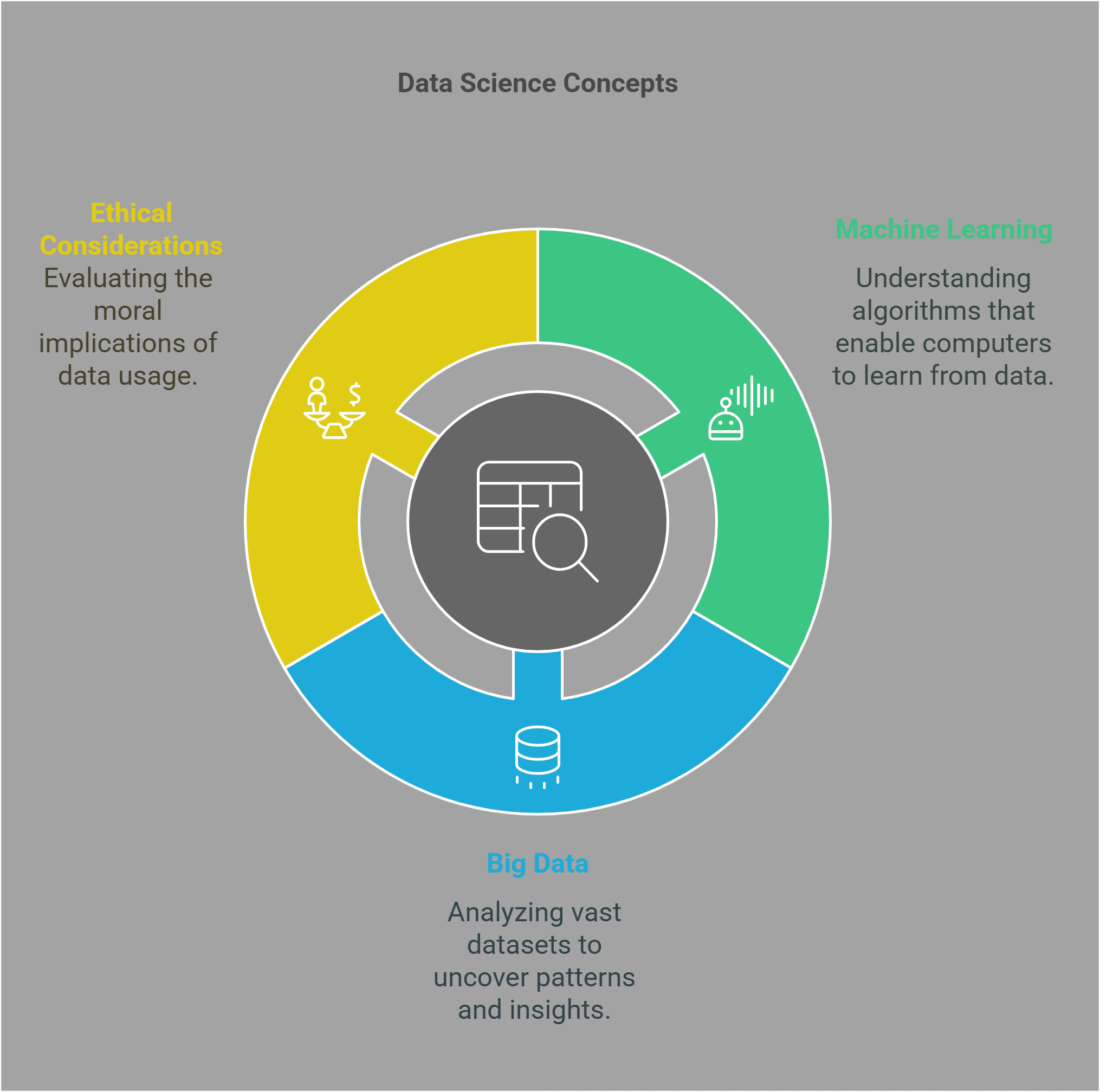
📋 Overview
This guide will explore the following essential data science concepts:
- Big Data
- Data Analytics
- Machine Learning in Data Science
- Data Cleaning and Preprocessing
- Data Visualization
- Artificial Intelligence vs. Data Science
- Statistical Modeling
- Ethical Issues in Data Science
- Applications of Data Science
- Future Trends in Data Science
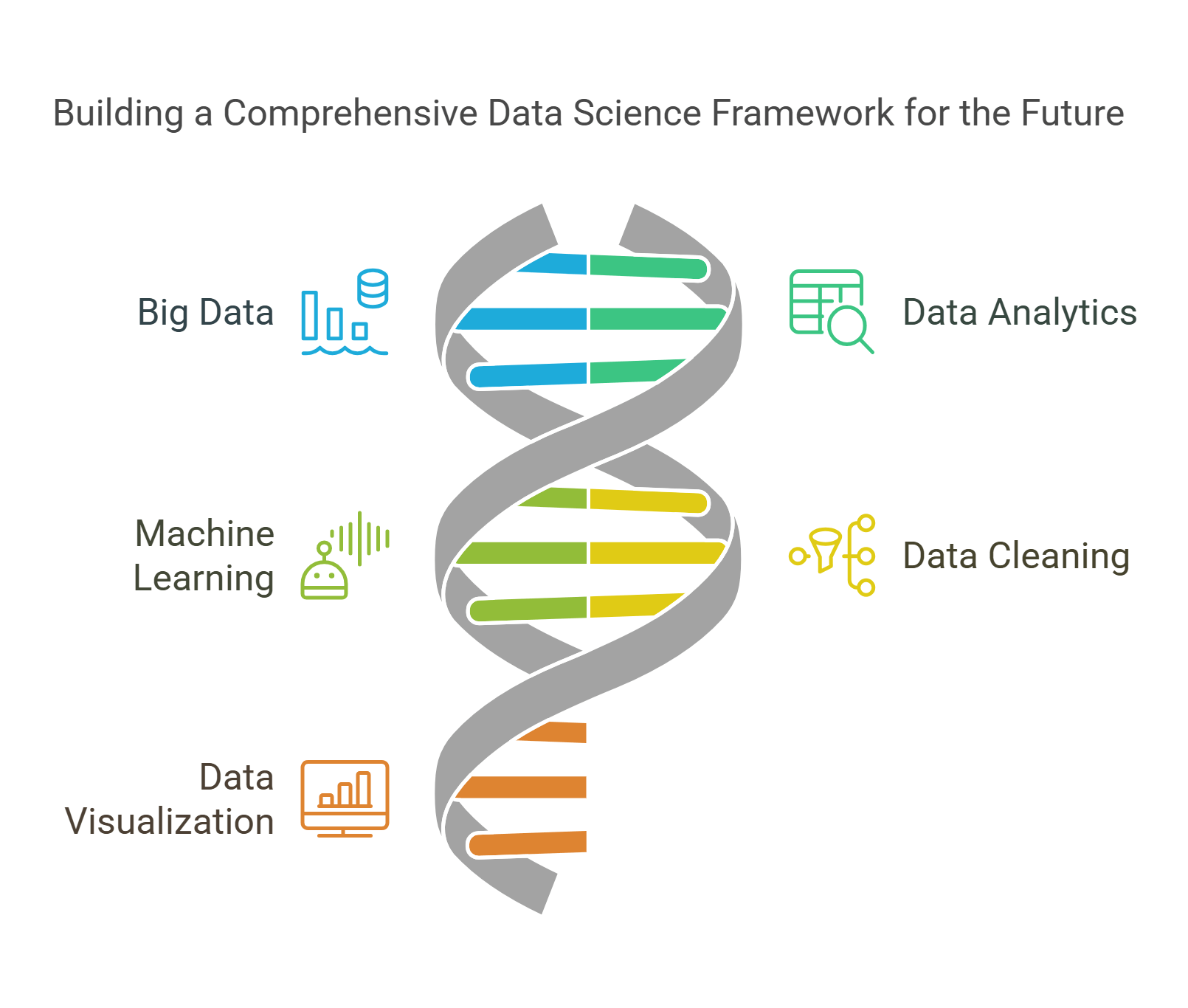
🔍 Detailed Explanations
1. Big Data
Big data refers to extremely large datasets that cannot be processed using traditional methods due to their volume, velocity, and variety. These datasets are often generated by digital activities, such as social media interactions, sensor readings, and online transactions.
- Characteristics: Volume (scale of data), Velocity (speed of data generation), Variety (different types of data).
- Technologies: Hadoop and Spark are commonly used to process big data.
- Example: Social media platforms like Facebook generate vast amounts of user data every second.
Explained Simply: Big data is like a massive library that’s constantly growing—you need special tools to find and organize the books.

2. Data Analytics
Data analytics involves examining data to uncover patterns, relationships, and insights that inform decision-making. It forms the backbone of data science.
- Descriptive Analytics: Summarizes historical data to identify trends.
- Predictive Analytics: Uses statistical models to forecast future outcomes.
- Prescriptive Analytics: Recommends actions based on data insights.
- Example: Retailers analyze purchase histories to recommend products to customers.
Explained Simply: Data analytics is like being a detective, analyzing clues to understand what happened and predict what might happen next.
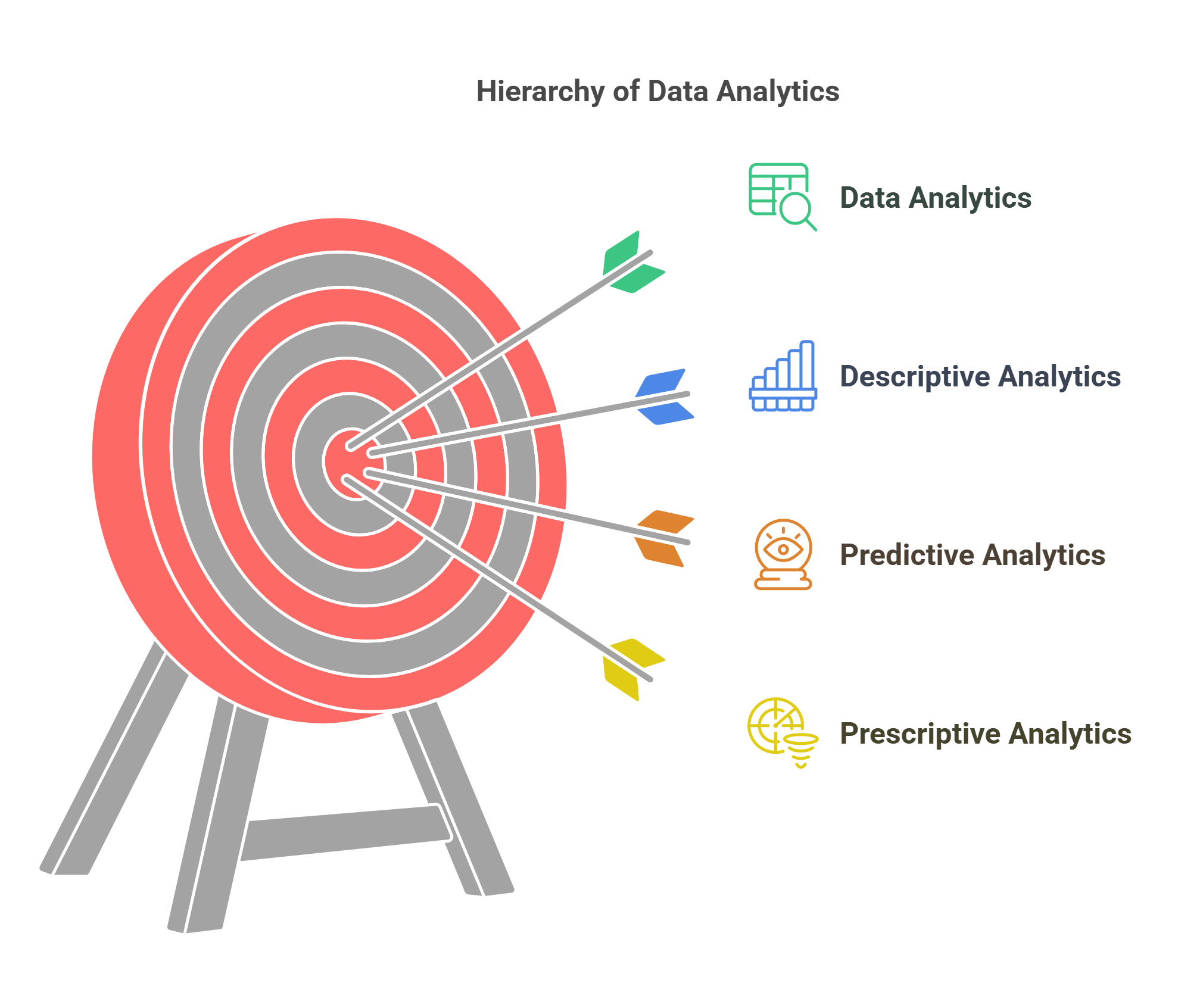
3. Machine Learning in Data Science
Machine learning (ML) is a core component of data science that uses algorithms to learn from data and make predictions or decisions without explicit programming.
- Supervised Learning: Models learn from labeled data (e.g., spam email detection).
- Unsupervised Learning: Identifies patterns in unlabeled data (e.g., customer segmentation).
- Reinforcement Learning: Trains models through feedback (e.g., game-playing AI).
- Example: Netflix’s recommendation system uses ML to suggest shows based on viewing history.
Explained Simply: Machine learning in data science is like teaching a computer to recognize patterns and make decisions based on examples.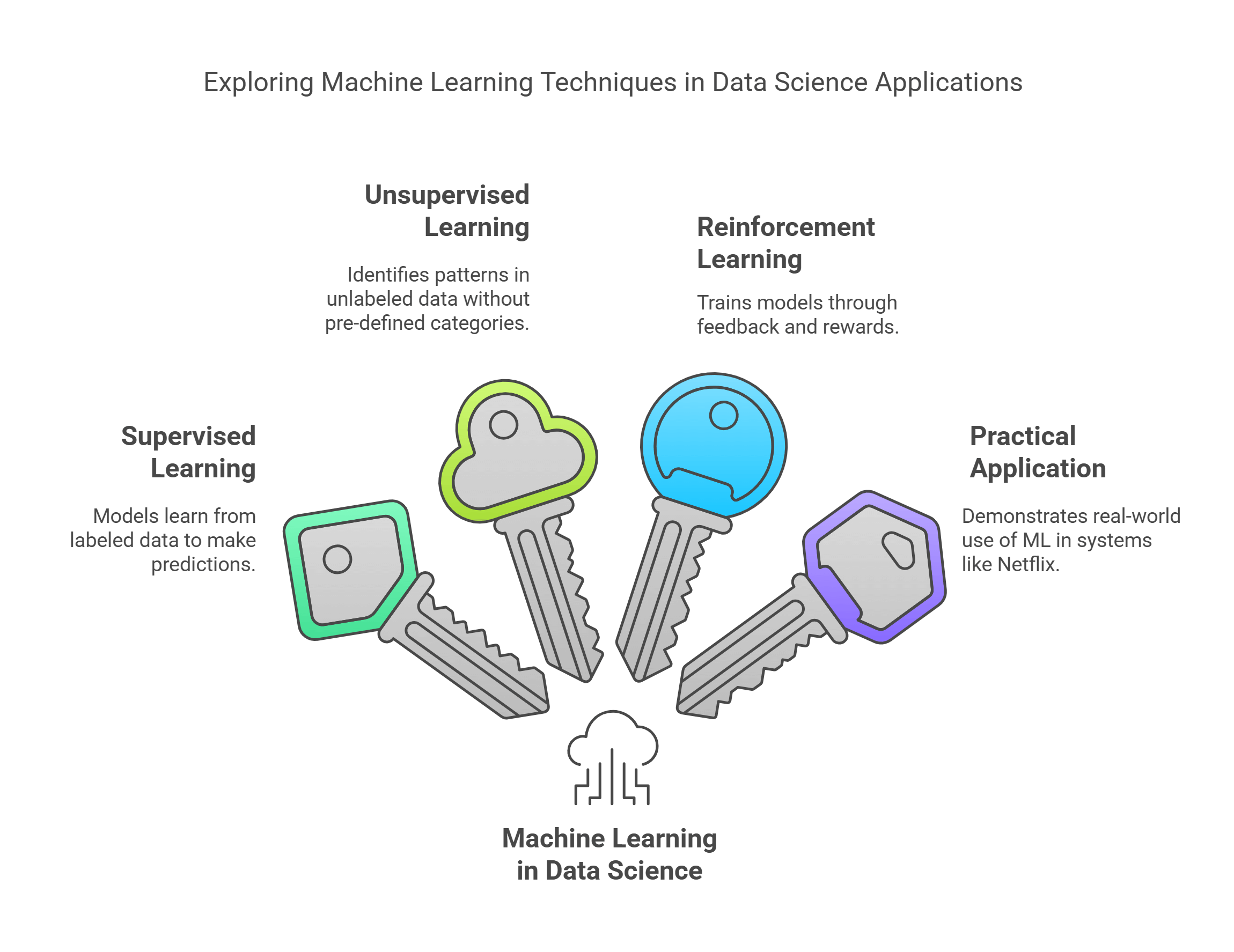
4. Data Cleaning and Preprocessing
Data cleaning and preprocessing involve preparing raw data for analysis by removing errors, inconsistencies, and irrelevant information.
- Steps: Handle missing values, standardize formats, and remove duplicates.
- Tools: Pandas (Python library) and Excel are commonly used.
- Example: Correcting typos in a dataset of customer addresses ensures accurate delivery logistics.
Explained Simply: Data cleaning is like tidying up your room before inviting guests so that everything is organized and presentable.
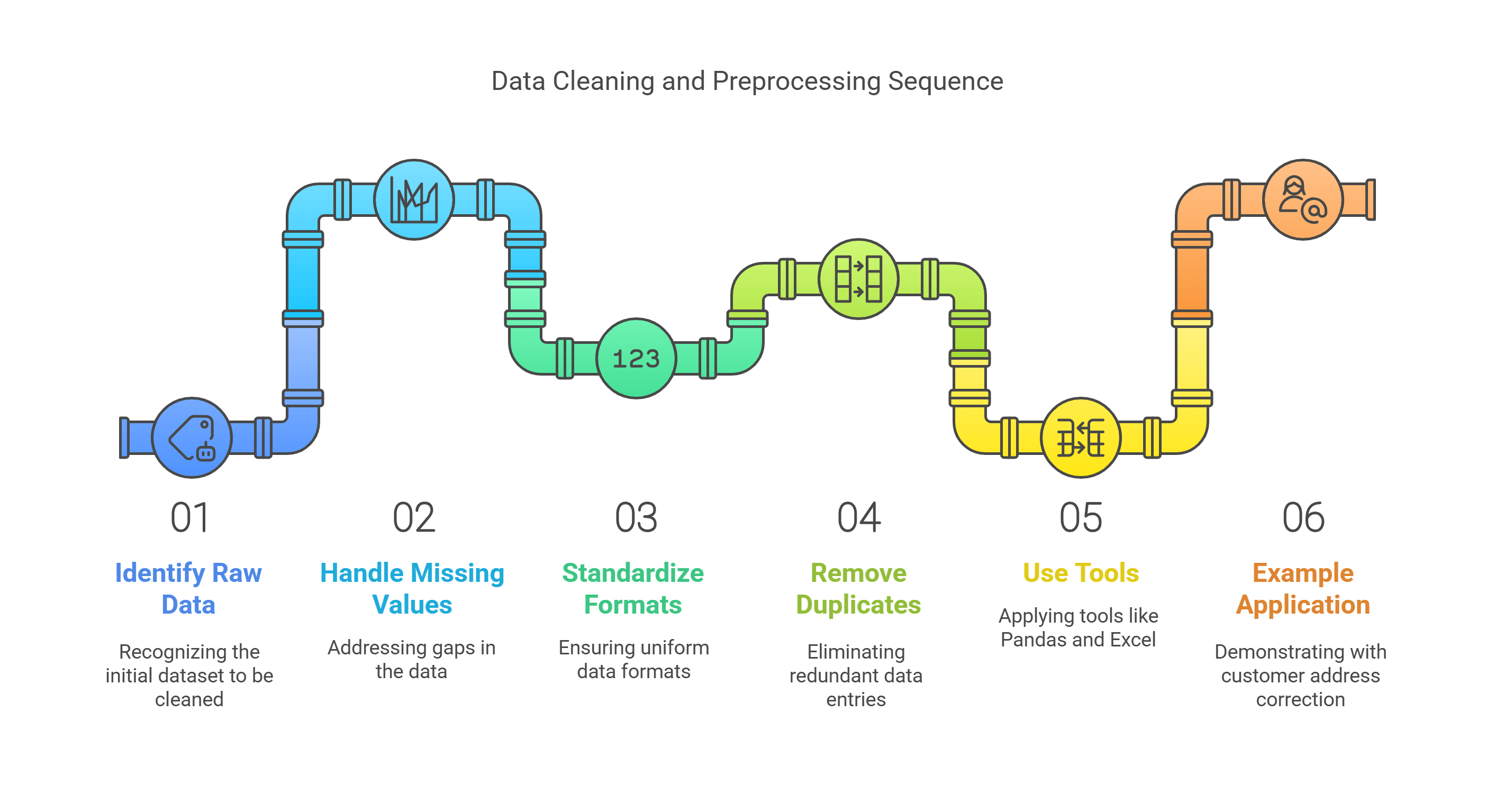
5. Data Visualization
Data visualization presents data in graphical formats, making it easier to identify patterns and communicate findings.
- Tools: Tableau, Power BI, and Matplotlib (Python library).
- Examples of Visuals: Line graphs for trends, pie charts for proportions, and heatmaps for correlations.
- Example: A sales team uses a bar chart to compare monthly revenue across regions.
Explained Simply: Data visualization is like turning numbers into pictures so everyone can quickly understand the story.
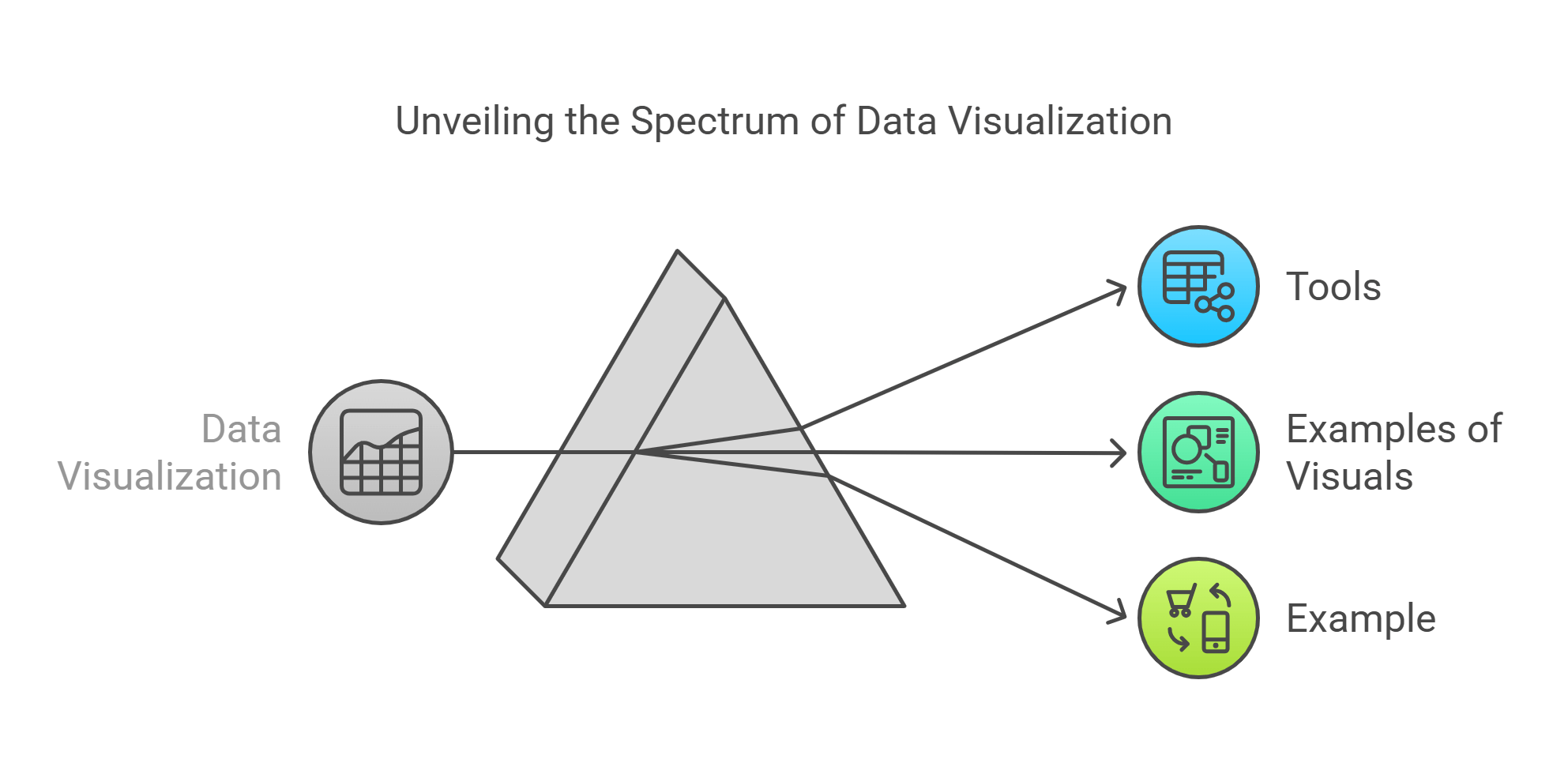
6. Artificial Intelligence vs. Data Science
While data science focuses on extracting insights from data, artificial intelligence (AI) builds systems that mimic human intelligence. Data science often leverages AI techniques to analyze data.
- Data Science: Encompasses data cleaning, analysis, and interpretation.
- AI: Involves creating intelligent systems, such as chatbots and self-driving cars.
- Example: AI models like GPT use data science principles for training and improving performance.
Explained Simply: Data science is like studying a map to find the best path, while AI is like building a self-driving car to follow that path.
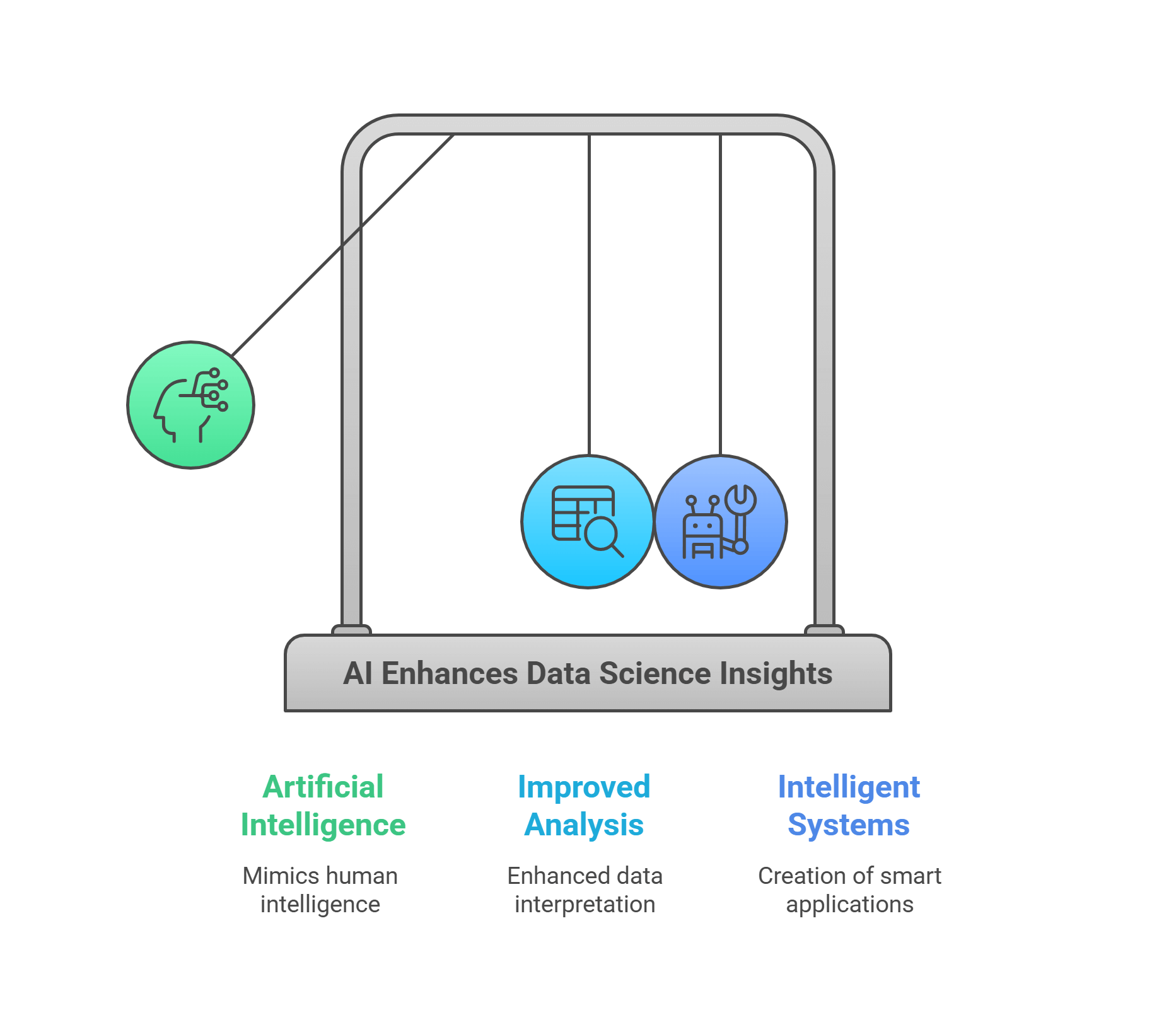
7. Statistical Modeling
Statistical modeling uses mathematical equations to represent relationships between variables and predict outcomes.
- Regression Analysis: Models the relationship between dependent and independent variables.
- Hypothesis Testing: Determines if data supports a specific assumption.
- Example: A hospital uses logistic regression to predict patient readmission rates based on past records.
Explained Simply: Statistical modeling is like creating a formula to predict what’s likely to happen based on past data.
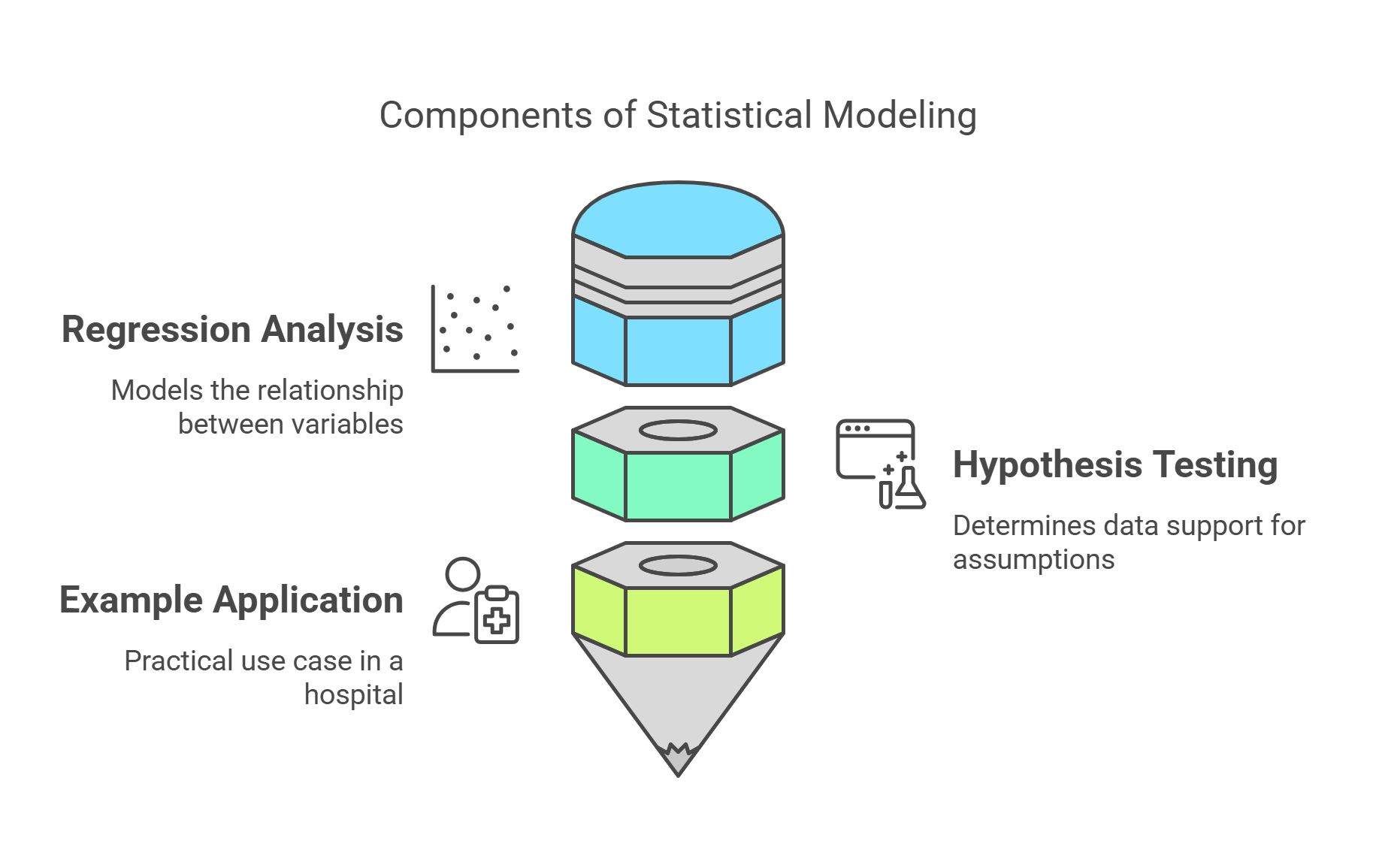
8. Ethical Issues in Data Science
Ethical concerns in data science address issues like privacy, bias, and accountability.
- Privacy: Ensuring sensitive user data remains confidential.
- Bias in Data: Biased datasets can lead to unfair outcomes, such as discriminatory hiring algorithms.
- Accountability: Determining responsibility for decisions made by data-driven systems.
- Example: The Cambridge Analytica scandal highlighted misuse of personal data for political purposes.
Explained Simply: Ethics in data science is like setting rules to ensure the responsible use of powerful tools.
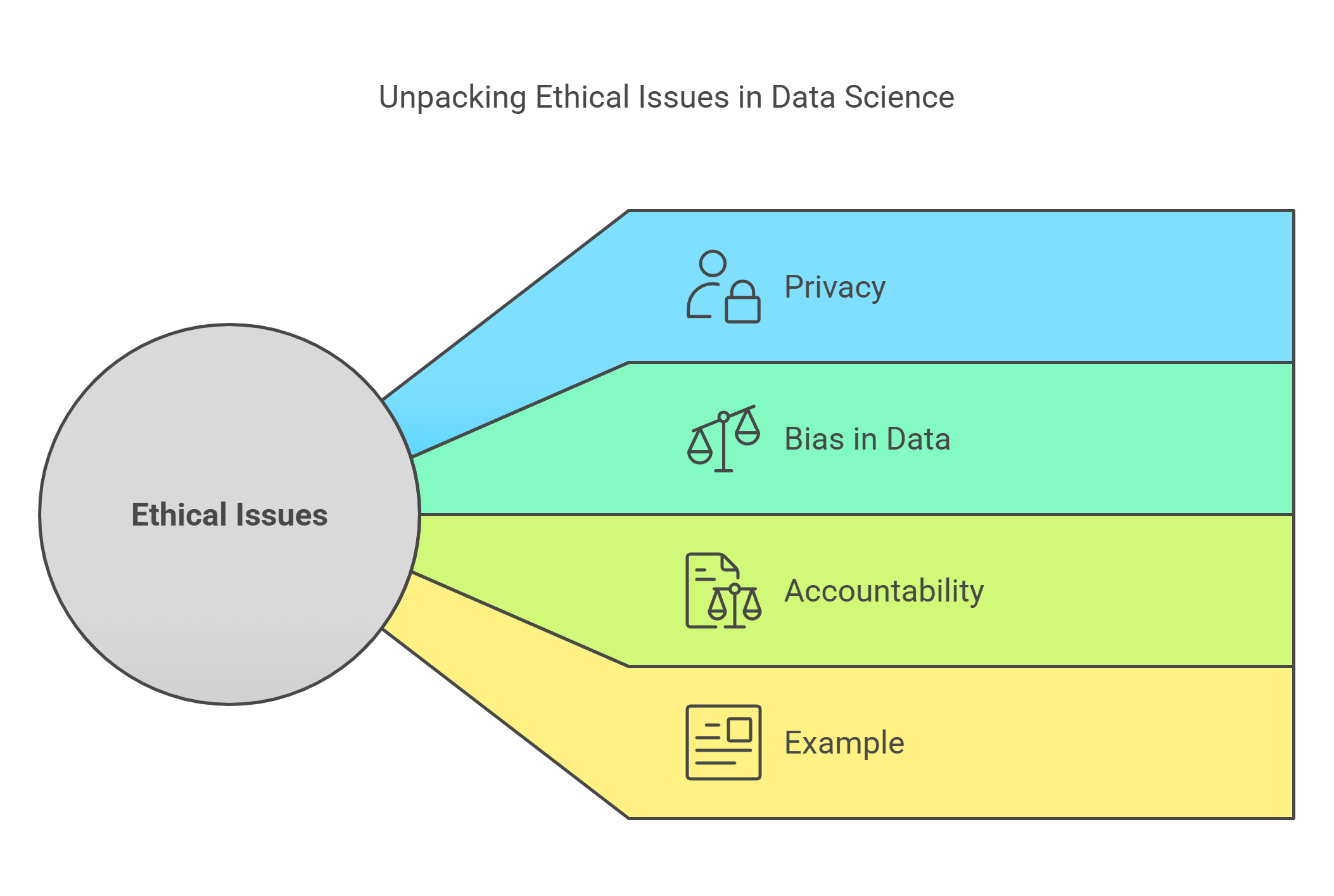
9. Applications of Data Science
Data science powers innovations across various industries, enhancing decision-making and operational efficiency.
- Healthcare: Predicts disease outbreaks and personalizes treatment plans.
- Finance: Detects fraud and optimizes investment strategies.
- Marketing: Enables targeted advertising and customer segmentation.
- Example: Predictive analytics helps e-commerce platforms suggest relevant products to users.
Explained Simply: Applications of data science are like adding smart tools to everyday activities to make them more efficient and effective.
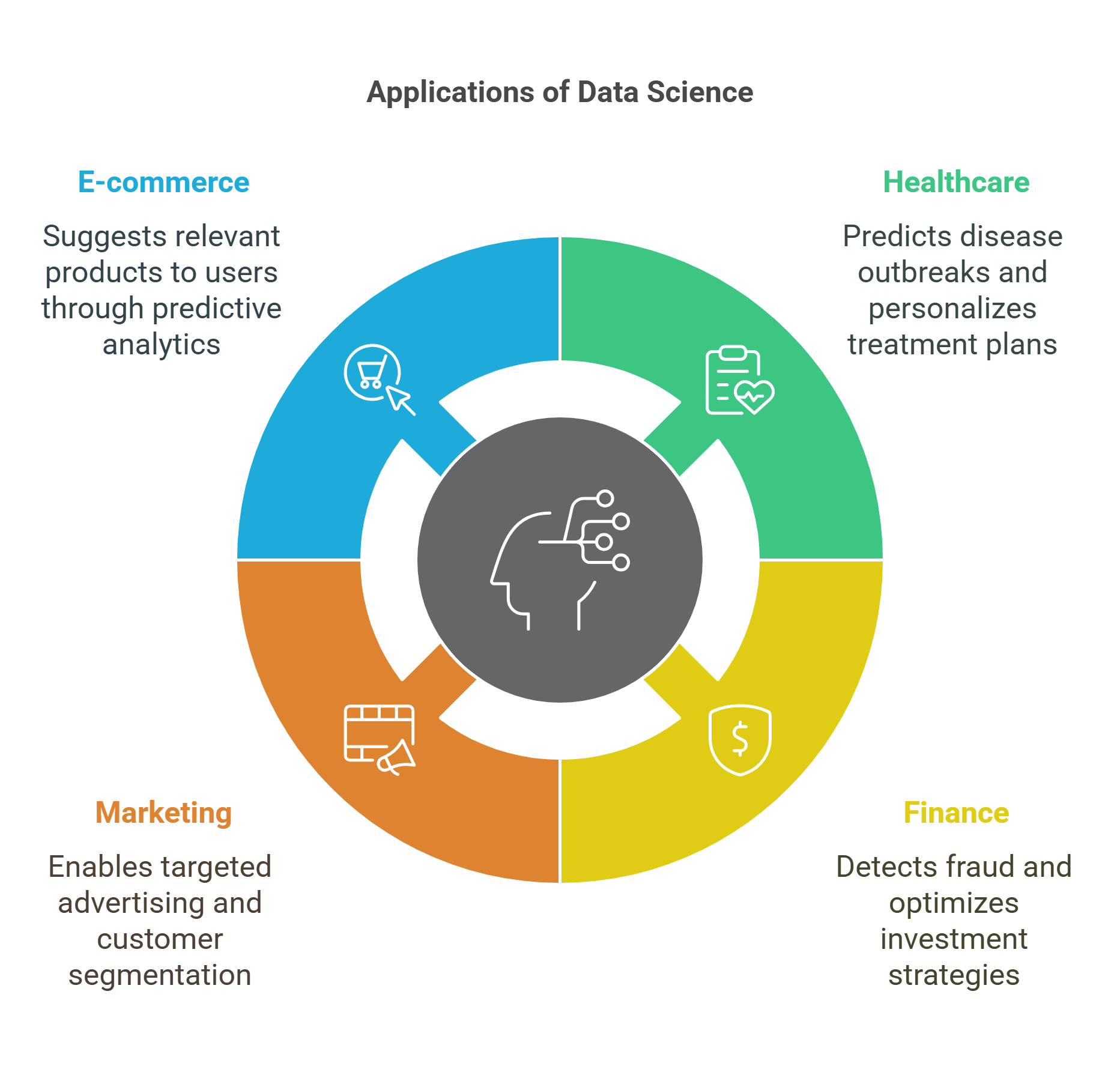
10. Future Trends in Data Science
The future of data science involves advancements in technology and increasing integration with AI and IoT (Internet of Things).
- Trends: Edge computing, automated machine learning (AutoML), and explainable AI.
- Challenges: Handling growing data volumes and addressing ethical concerns.
- Example: Smart cities use IoT sensors and data science to optimize traffic flow and energy usage.
Explained Simply: The future of data science is like building smarter systems to solve bigger problems faster and more responsibly.
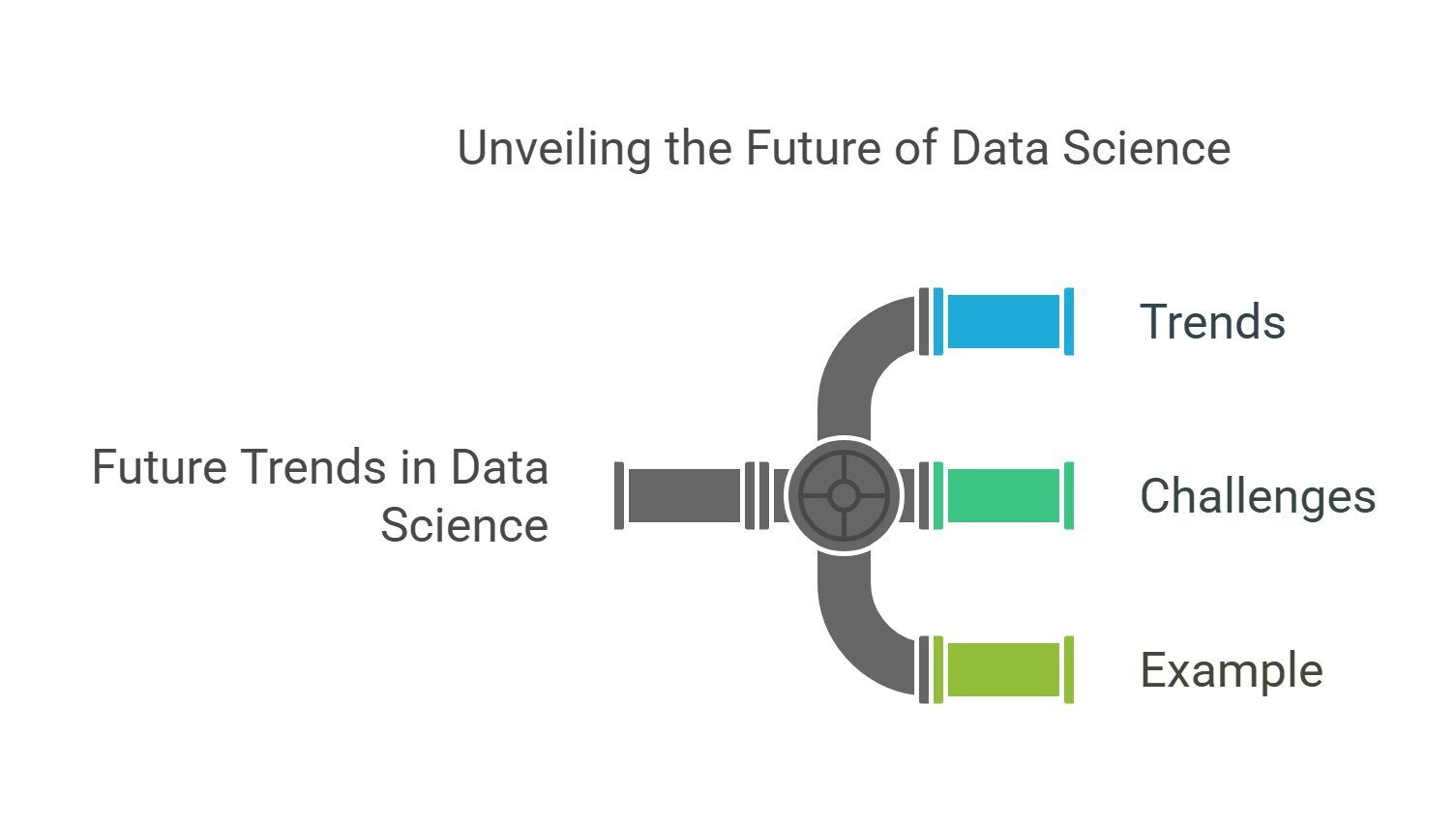
✨ Conclusion
Data science has revolutionized decision-making across industries by unlocking the potential hidden in data. By mastering concepts like big data, machine learning, and ethical issues, readers can better analyze RC passages on this dynamic topic. Understanding data science equips us to navigate a world increasingly driven by information. 📊










